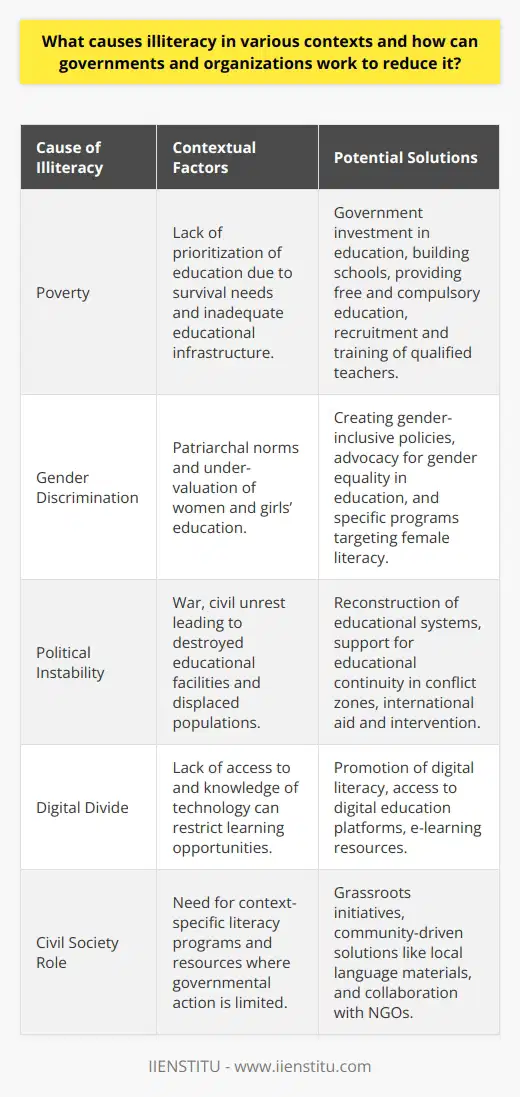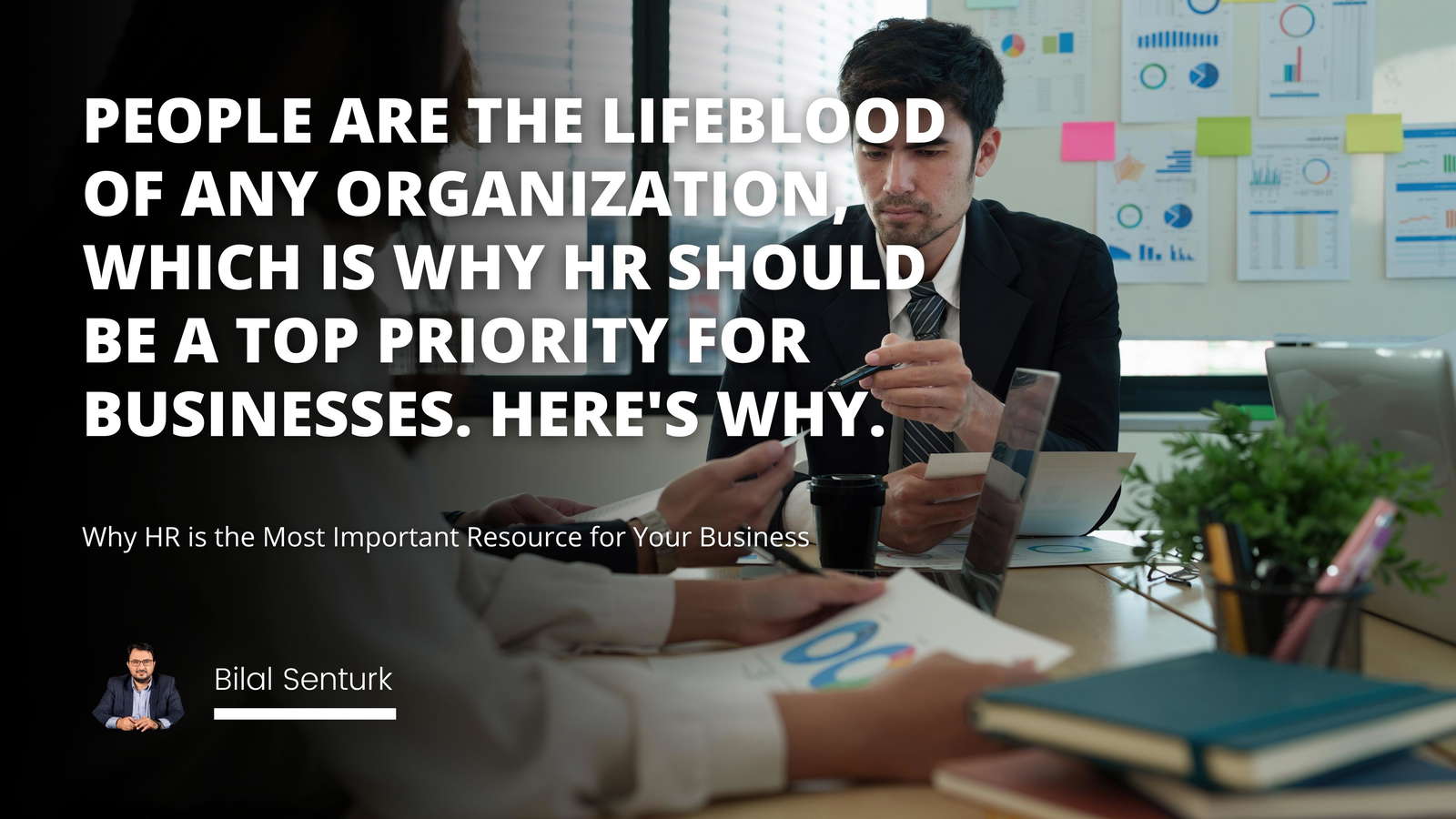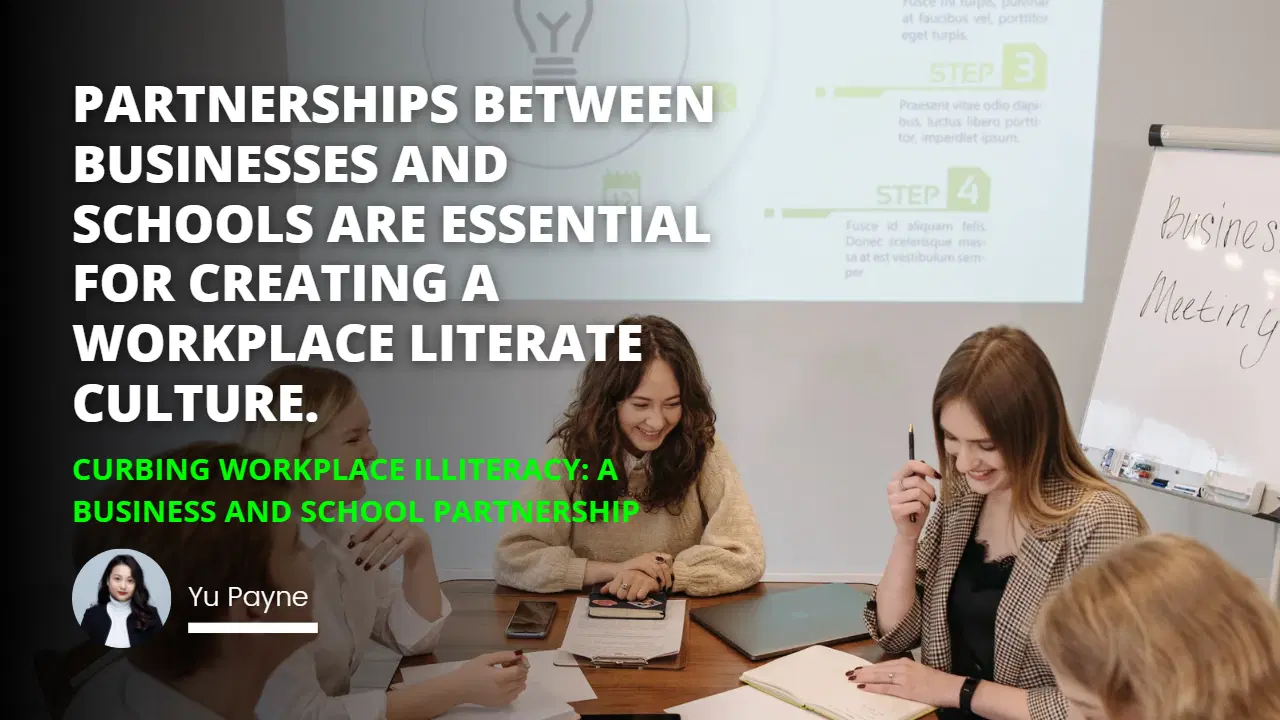
The Challenges of Workplace Illiteracy
Benefits of Business and School Partnerships in Curbing Workplace Illiteracy
Strategies for Effective Business and School Partnerships
Workplace illiteracy is a significant challenge that plagues many organizations, from small businesses to multinational corporations. It is defined as the inability to read and write at the primary level necessary for an individual to hold a job and participate effectively in society.
The effects of workplace illiteracy can be far-reaching, with high costs to both employers and employees. Fortunately, a productive way to combat workplace illiteracy is through a partnership between local businesses and educational institutions.
The Challenges of Workplace Illiteracy
It is estimated that approximately 14% of the American workforce is illiterate or lacks basic literacy skills. The reasons why workplace illiteracy persists are many. Some common causes are the lack of educational opportunities in certain areas, cultural and language barriers, and a lack of motivation to become literate.
The direct effects of workplace illiteracy on businesses can include higher recruitment and training costs, lower employee productivity and retention, and a decrease in workplace safety. High levels of workplace illiteracy can create a pool of relatively inexperienced employees and result in reduced employee productivity and job satisfaction. In addition, illiterate employees may lack the skills and knowledge to maintain safety standards and put their colleagues at risk of accidents. All of these issues can lead to decreased morale and increased turnover, ultimately negatively impacting the organization.
Benefits of Business and School Partnerships in Curbing Workplace Illiteracy
Businesses have much to gain from forming partnerships with educational institutions to address workplace illiteracy. One of the primary benefits is the potential to reduce recruitment and training costs, as employees with better literacy skills are more likely to stick around and perform better in their positions. Additionally, such partnerships can help to engage students in career exploration opportunities, enabling them to gain exposure to the workforce and develop professional skills that can prepare them for future employment opportunities.
Furthermore, by forming coalitions with businesses, schools can not only engage students in meaningful work experiences but also help increase the workforce's professionalization. This can result in higher employee retention and satisfaction, which leads to increased commitment and productivity within the organization.
Strategies for Effective Business and School Partnerships
Strong communication and coordination between businesses and schools remain critical for establishing and sustaining effective partnerships. The former should take the initiative to reach out to local educational bodies and initiate meaningful collaborations to reduce workplace illiteracy.
Businesses can work with schools to provide students with meaningful career exploration and hands-on work experience. This can include offering paid internships or solving real-world business problems. Additionally, businesses should consider sponsoring on-site literacy and professional training initiatives, such as basic literacy classes or workshops on developing communication and teamwork skills.
Conclusion: Business and school partnerships can effectively reduce workplace illiteracy and its associated costs. Such collaborations can provide students with exposure to the workforce, career exploration experiences, and the chance to develop professional skills that can prepare them for future employment opportunities. In addition, they can allow organizations to reduce their recruitment and training costs, increase employee retention and satisfaction, and lead to an overall improvement in their organization's performance.
Organizations should reach out to local educational partners and build a robust communication infrastructure to ensure the success of their partnership. Moreover, they should consider initiatives designed to offer meaningful work experiences, such as paid internships or sponsoring on-site literacy and professional development training. By taking such steps, organizations can significantly reduce workplace illiteracy, ultimately leading to tremendous organizational success.
Partnerships between businesses and schools are essential for creating a workplace-literate culture.
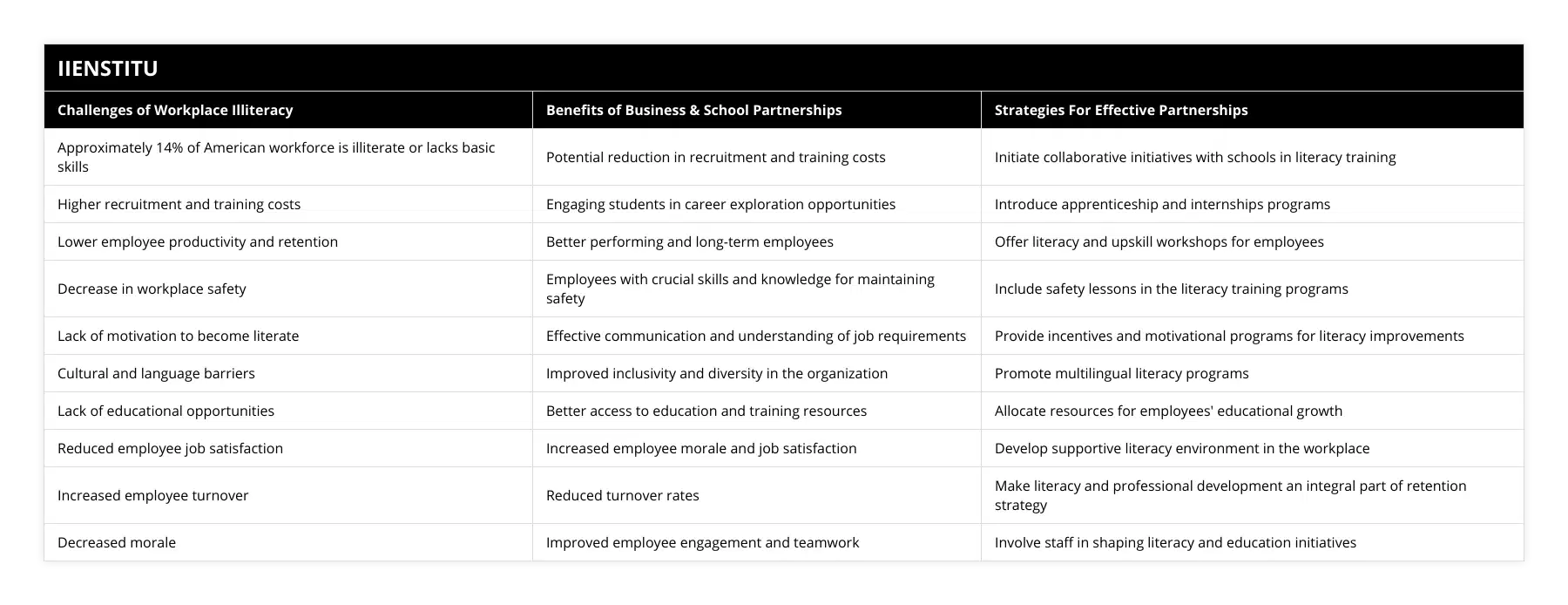
Workplace illiteracy, a problem affecting approximately 14% of the American workforce, poses significant challenges to both employees and employers, resulting in high recruitment and training costs, decreased productivity and workplace safety, and low employee retention. To combat this issue, the formation of partnerships between businesses and educational institutions emerges as an efficient solution with multiple benefits including reduced recruitment and training expenses, improved employee performance, and provision of career exposure to students. An HR certificate course could be an excellent addition to these educational initiatives, fostering more skilled and literate employees ready for the workforce.hr certificate course
Frequently Asked Questions
How effective is Curbing Workplace Illiteracy when it comes to solving skills issues in the workforce?
Workplace illiteracy is a serious issue today, and yet it is not often discussed or addressed. As a result, hundreds of thousands of workers lack the essential literacy skills to perform adequately in their jobs, leading to low wages, low productivity, and difficulty competing in a rapidly evolving market. Curbing workplace illiteracy has the potential to positively impact workforce skills issues and make for a more efficient, productive, and competitive workplace.
Workplace illiteracy is a pervasive problem affecting workers in various skills and fields. According to the National Institute for Literacy, nearly 30 million American adults lack the sufficient literacy needed to ensure success in the workplace. With this immense number of individuals affected by work illiteracy, it is clear that steps must be taken to address this issue.
The consequences of workplace illiteracy are significant; a lack of adequate literacy skills dramatically impacts an individual’s ability to perform well and be successful in their profession. For example, low literacy can lead to low wages, difficulty competing in a highly competitive professional world, and difficulty transitioning to new job roles or positions. Additionally, numerous studies have indicated that low literacy is associated with lower productivity compared to those with higher literacy rates.
Fortunately, there are a variety of effective methods that can be used to address workplace illiteracy. First, businesses should concert on recruiting and promoting individuals with adequate literacy skills and assess these skills when hiring. Additionally, employers can recognize the value of providing employees with job-related literacy education and training opportunities, providing workers with the tools they need to succeed. Finally, businesses should strive to create a positive and supportive workplace culture that encourages and rewards literacy education and takes time to support lower-level employees in building the skills they need to be productive in their positions.
To conclude, addressing workplace illiteracy is essential for ensuring the success of the workforce. Therefore, companies must consciously incorporate literacy education and training into their practices and recognize the value of recruiting and promoting those with the necessary skills. By doing so, businesses will be able to create a more positive and efficient workplace and significantly reduce the number of literacy-related skills issues.

How exactly do business and schools partner to address workplace illiteracy issues?
Workplace illiteracy is a significant issue that can hinder productivity and the development of businesses and lead to feelings of exclusion and frustration among staff members. Therefore, companies and schools need to partner up to address these challenges.
Businesses and schools can identify critical literacy challenges in the workplace by working together. For example, schools can use their data systems and resources to help create learning strategies, help design teaching materials, and determine appropriate assessments. On the other hand, businesses can provide direct access to real-world scenarios and examples, making learning more meaningful and relevant to their employees. This way, both sides can share resources, ideas, and expertise, providing a more effective and comprehensive approach to addressing illiteracy issues.
When it comes to specific strategies for addressing literacy issues, businesses and schools can coordinate efforts to teach basic literacy skills, such as reading and writing, numeracy skills, problem-solving, financial literacy, and basic math. In addition, the emphasis should be on developing practical and applicable knowledge, such as creating and understanding reports, using spreadsheets and data products, or preparing and presenting presentations.
Creating a supportive and safe environment where employees are encouraged to learn and strive to improve their literacy-related skills is also essential. Schools and businesses should work together to establish and reinforce a culture of openness and accountability, where employees feel encouraged and supported to improve their educational outcomes. Fostering a positive working environment, where employees are rewarded for learning, is essential for creating an influential learning culture and promoting an inclusive workplace.
Finally, businesses and schools need to evaluate the effectiveness of their partnership and identify areas where further improvement is required. Regular feedback from employees and staff should be sought to understand what is working and what can be improved. This feedback can inform future strategies, enabling businesses and schools to develop further and refine their approaches to address workplace illiteracy.
In conclusion, businesses and schools must partner up to tackle the issue of workplace illiteracy. By sharing resources, ideas, and expertise, each side can address these challenges most effectively lotion; a supportive and safe environment where employees are encouraged to learn should be established and regularly evaluated to ensure that strategies are practical and are geared toward providing an inclusive working space.
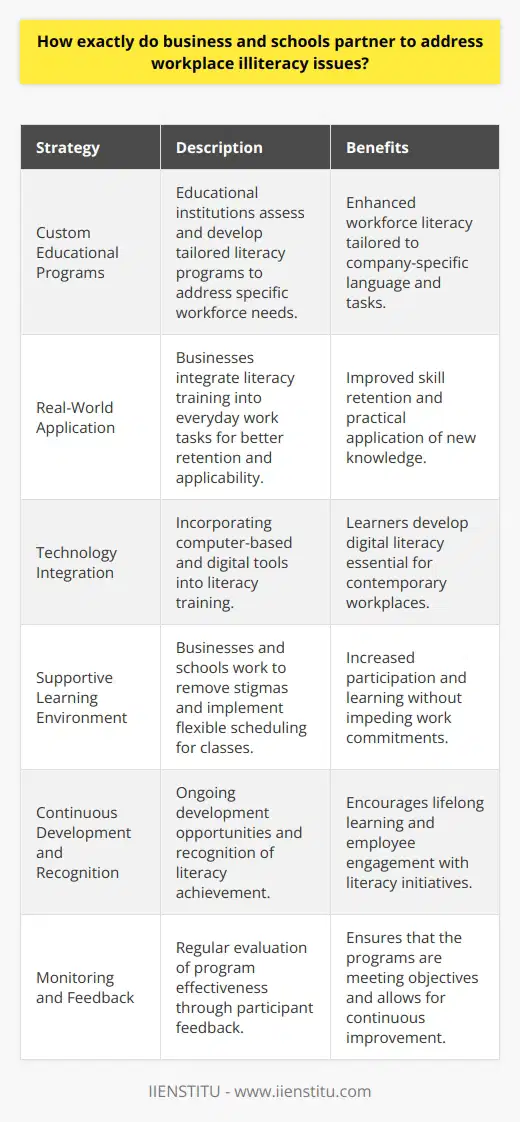
What are the main challenges of implementing this approach to promoting workplace literacy?
Implementing an approach to promote workplace literacy can present several challenges. These challenges may be related to financial, technical, and logistical issues and difficulties related to motivation and participation.
One of the significant challenges associated with workplace literacy approaches is the financial costs associated with creating and sustaining workplace literacy programs. For example, these approaches may involve purchasing educational materials, providing incentives for participants, providing access to information technology, and hiring and training personnel. Depending on the size and scope of a workplace literacy program, these costs can be substantial, particularly for small companies and organizations.
A further challenge is securing the technical resources necessary to implement a workplace literacy program. Depending on the program's objectives, it may require computers, internet access, specialized software, and instructional materials. Moreover, these resources may need to be regularly updated and maintained.
Establishing a practical training and assessment system also poses challenges. Programs must be designed with objectives and goals and provide appropriate incentives and rewards for participants. Moreover, the training must be adapted to the worker's learning styles and needs.
Finally, motivating and sustaining participation in workplace literacy programs often poses obstacles. Employees may be reluctant to participate for various reasons, including lack of interest, time constraints, or perceived lack of benefit. Programs can be tailored to meet individual needs to engage employees in the process. In addition, employers must be aware of workplace culture and policies, as engagement in workplace literacy programs may be seen as a sign of a lack of proficiency.
In sum, implementing workplace literacy programs presents several financial, technical, and logistical challenges, as well as difficulties associated with motivation and participation. Therefore, it is essential for employers to consider these issues carefully and to tailor their programs to the needs of their organization and workforce.
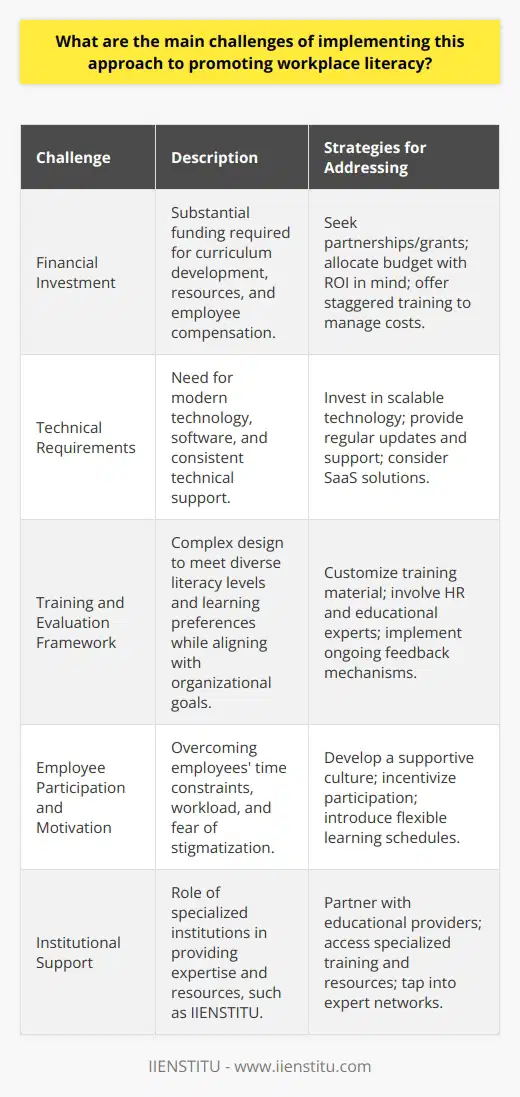
How does illiteracy affect employment prospects and economic growth?
Illiteracy's Impact on Employment Prospects
Illiteracy significantly hinders an individual's employment prospects. Lack of basic reading and writing skills makes it difficult to secure a job, especially in sectors that mandate these abilities. Even in unskilled labour, literacy is essential for understanding work instructions, safety protocols, and legal contracts. Illiteracy, therefore, leads to limited job options and persistently low wages, trapping individuals in a cycle of poverty.
Influence of Illiteracy on Economic Growth
On a larger scale, high illiteracy rates detrimentally affect a country's economic growth. A literate workforce is key to a nation's economic progress since it enables a higher level of productivity. It also fosters innovation and supports the development of a knowledge-based economy. Moreover, high illiteracy rates increase public spending on social assistance programs, emptying resources that could otherwise be invested productively.
Illiteracy's Effects on Socio-Economic Stability
Moreover, widespread illiteracy undermines socio-economic stability. A literate populace is crucial for the effective functioning of democratic institutions. Illiterate citizens are more prone to exploitation and less likely to participate actively in civic duties. High illiteracy rates also correlate with increased crime rates, social unrest, and political instability, all of which deter investment and economic development.
Mitigation Strategies
Hence, literacy programs play a significant role in promoting employment and economic growth. Investing in education, particularly in early literacy initiatives, has a considerable return on investment. It fuels a virtuous cycle of individual prosperity, community development, and national economic growth. It also fosters social and political stability, reinforcing long-term economic health.
In conclusion, illiteracy limits employment prospects and curtails economic growth. Prioritizing education and literacy programs at all levels can help mitigate these adverse effects, promoting inclusive and sustainable economic development.
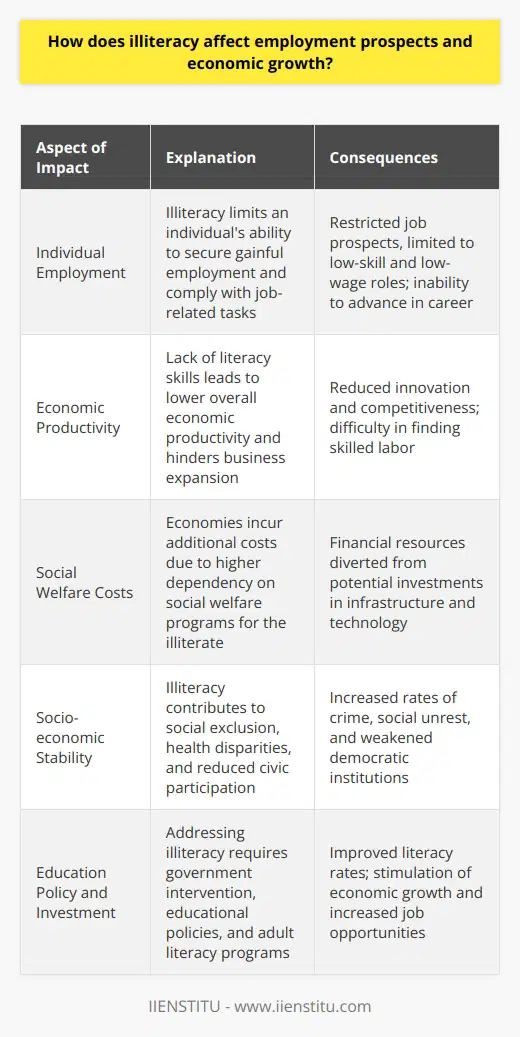
Why is illiteracy a problem in modern societies and what implications does it have on individuals and communities?
Defining Illiteracy
Illiteracy, the inability to read or write, presents a significant issue in contemporary societies. Particularly in this information age, illiteracy implies a barrier, inhibiting individuals from participating wholly in their communities or even in their personal lives.
Implications for Individuals
On a personal level, illiteracy has profound consequences. It restricts individuals from accessing written knowledge, consequently narrowing their perspectives and limiting their potential for personal growth. Illiterate individuals can also struggle with essential tasks necessary for personal autonomy, like reading instructions, forms, or maps. Such limitations often result in reduced self-confidence and self-esteem.
Illiteracy and Employment
When addressing professional lives, illiteracy directly impacts employability and earning potential. Illiterate individuals are often confined to low-paying jobs with minimal career or income growth potential. They may also face challenges in understanding work-related documents, thus hindering overall productivity.
Effects on Communities
From a societal perspective, illiteracy hampers development. It compromises progress in areas like health, governance, and technology, where public engagement influences policy-making and innovation. High illiteracy rates point to a wasted human resource potential, limiting a community's overall growth and even its socioeconomic status.
Conclusion
In conclusion, illiteracy emerges as a critical issue in modern societies due to its far-reaching implications for both individuals and communities. It affects personal development, hampers professional growth, and restricts societal advancement. Combatting illiteracy, hence involves both individual empowerment and collective transformation.
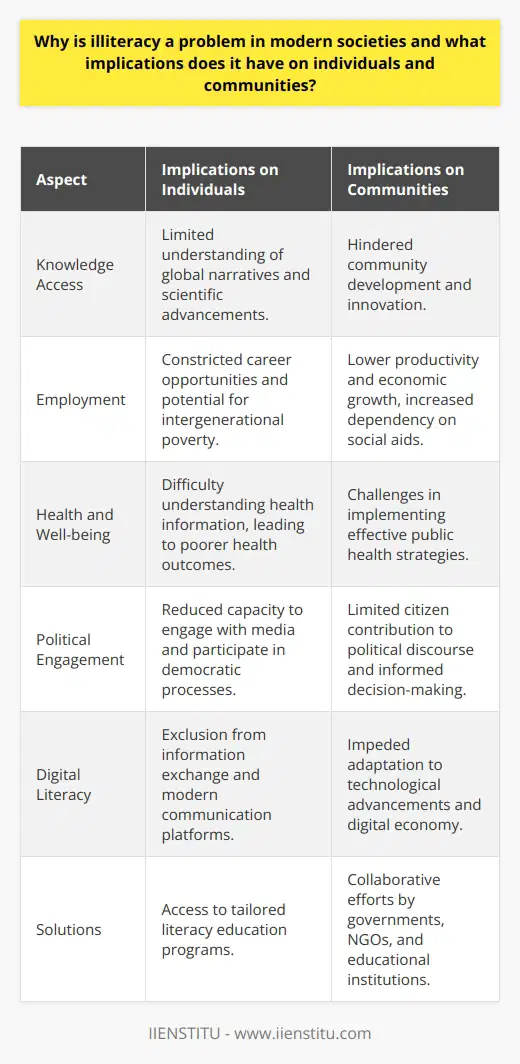
What causes illiteracy in various contexts and how can governments and organizations work to reduce it?
Causes of Illiteracy
Many factors contribute to illiteracy, often varying based on cultural and societal contexts. The most common causes include poverty-stricken environments, lack of educational resources, and inadequate school infrastructure. In some cultures, gender discrimination plays a role, preventing girls from accessing education. In other cases, war and civil unrest disrupt regular education, resulting in high levels of illiteracy.
Government's Role in Reducing Illiteracy
To combat this, governments must improve education access and quality. It involves investing in schools, hiring proficient teachers, and ensuring diverse, relevant curricula. Governments should also work to eliminate discrimination in education, specifically based on gender or socio-economic status. Furthermore, integrating literacy into wider policies like health, employment or poverty reduction can also be beneficial.
Role of Organizations
Organizations can play a pivotal role in reducing illiteracy. Local NGOs are uniquely positioned to understand community needs and can therefore tailor literacy programs accordingly. International organizations can support with funding, best-practice sharing, and overall advocacy for global literacy. Both types of organizations can also assist in providing non-formal education for adults, such as literacy classes and vocational training.
The Use of Technology
Finally, technology can significantly assist in addressing illiteracy. Digital tools can create interactive, engaging, and personalized learning experiences. They can reach learners in remote areas, where traditional classroom teaching may not be viable. Governments and organizations should endorse the use of technology in education, promoting digital literacy as a vital skill in today's society.
To summarize, various contextual factors promote illiteracy. However, through concerted efforts by governments, organizations, and the use of technology, we can significantly reduce illiteracy rates. Hence, maintaining a multi-faceted approach is crucial for success.
